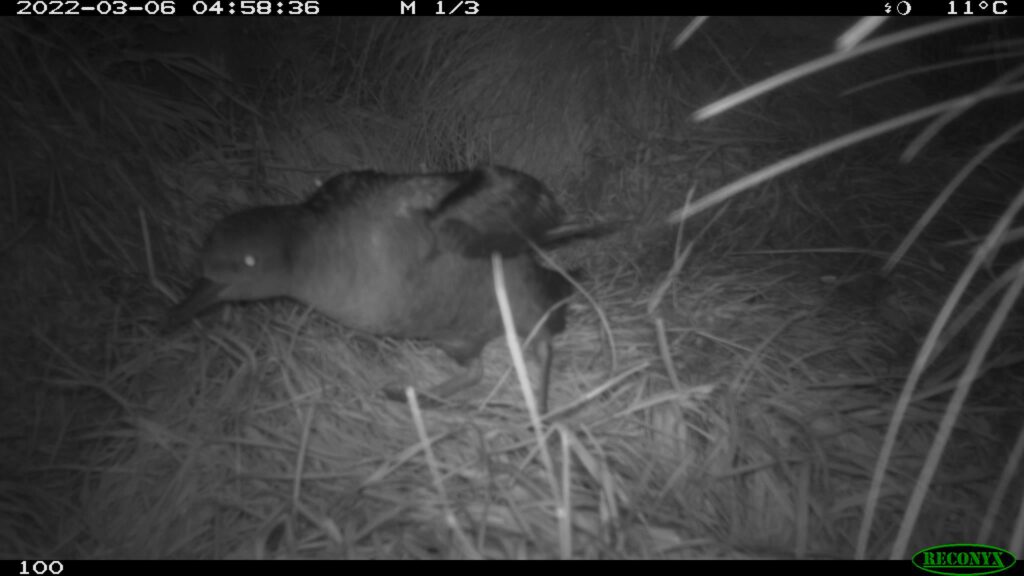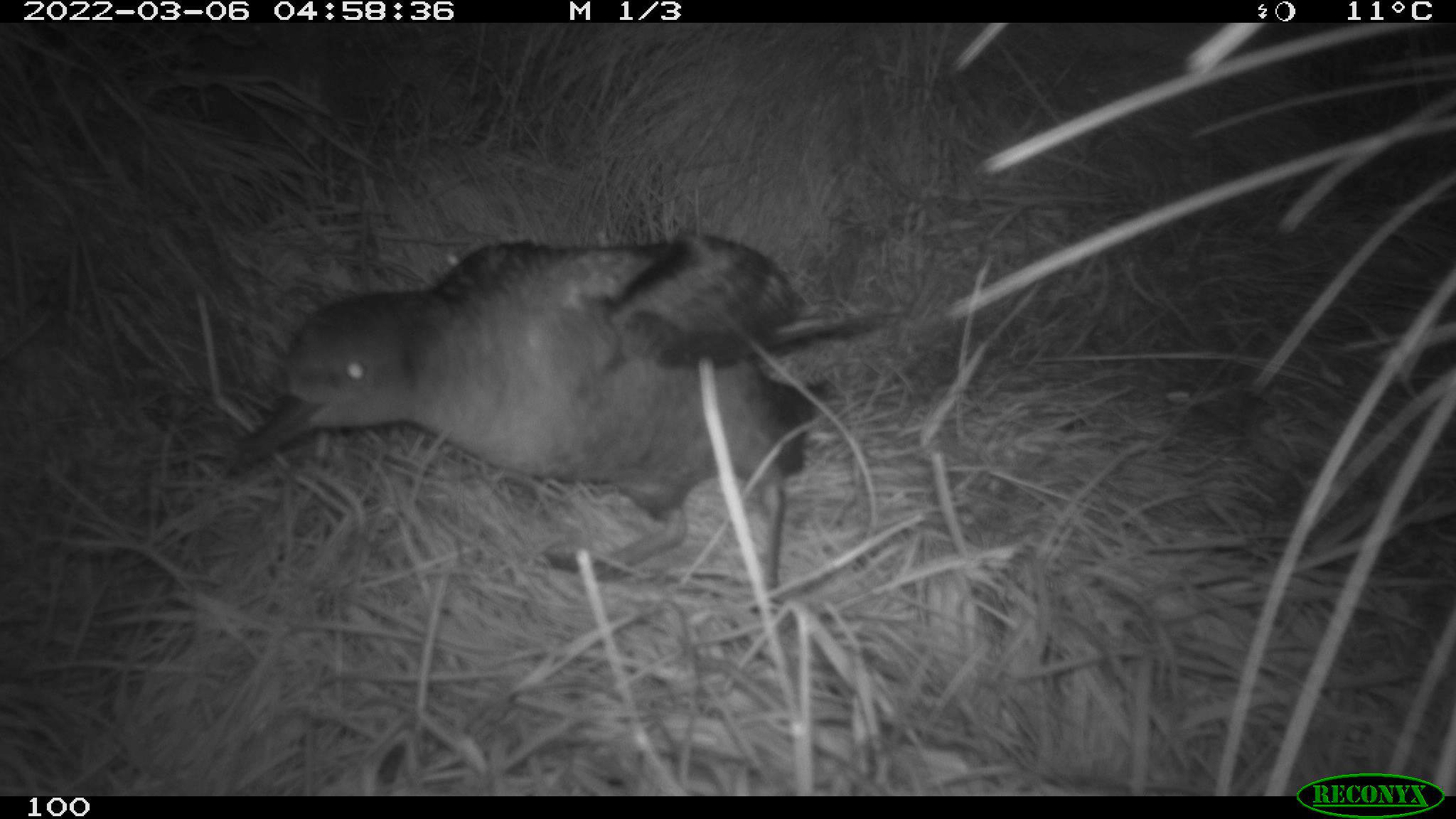A story by Jess.
Just before Christmas 2021 there was a storm of epic proportions that caused a near biblical deluge. Torrents of water running off the hills took one of our cameras on an impromptu voyage, leaving it stranded in a debris patch near a local beach. It was pure chance that this camera was recovered. A miracle really. One could be forgiven in thinking that this Camera’s saga was over, that such a wild ride would be cause for the device’s early retirement. That was not to be the case. Camera 66 remained fully functional.
As soon as the wayfaring camera was bought in from its ordeal riding the wild flood rapids, it attended a post flood debriefing and the footage it contained scoured for usable data. The prodigal device was then cleaned, and its programming checked so it could be enlisted again for the next deployment.
Its re-deployment was sooner than expected.
Incidentally, the December downpour also caused some considerable damage to a special Banks Peninsula bird sanctuary. The place in question is a predator-proof fenced area that protects a colony of precious sooty shearwater/tītī.
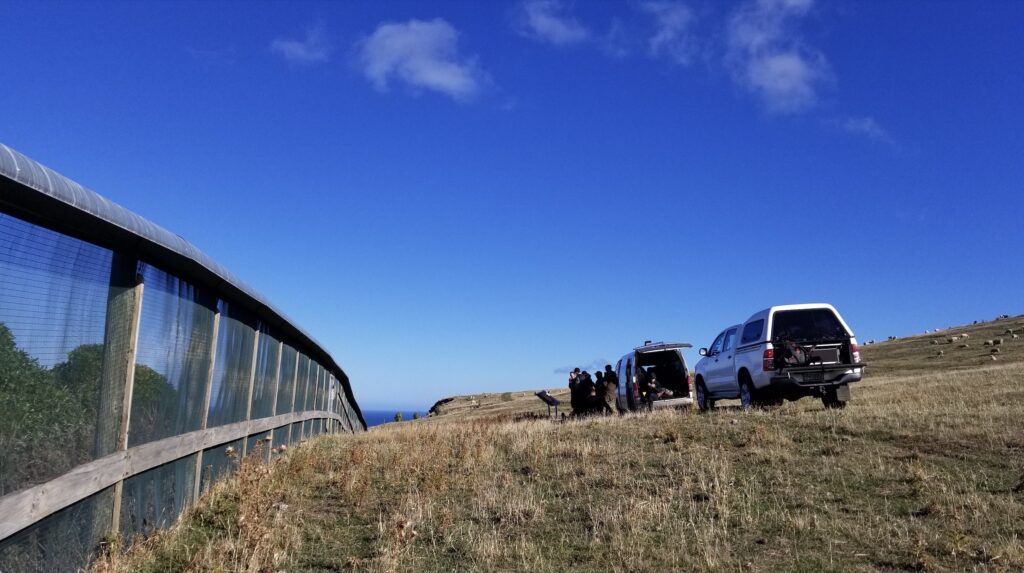
This is one of the last tītī colonies on Banks Peninsula. It is situated on the edge of a massive cliff, a local farmer was the first person to try and preserve these special birds, building a self-funded predator fence to try and protect their nesting area. This fence has now since been upgraded, creating an impenetrable fortress which provides safety for the various plant and animal species within, including the tītī. Everyone benefited from the fence… except the predators!
That was, until the flooding in December.
A slip rumbled through the colony and damaged part of this vital fence, therefore making it possible for unwelcome things to gain access to this specially reserved place. The fence was fixed, however the host of agencies and individuals involved in the colony’s preservation needed to confirm that this sanctuary was indeed still a sanctuary, and not the new home of some enterprising predator.
Our PFBP rangers, Jess, and Ollie were sent in to install 2 cameras to make sure there were no nefarious goings-on inside the restored fence perimeter. One of these cameras was our adventurer, number 66.
Its new mission was to keep a watchful eye on the above special colony of sea birds along with its friend, camera 100. As the two rangers, Jess and Ollie entered the colony, they moved around, rebaiting the existing traps located within the perimeter. They quickly found something unwelcome and disturbing near one of them, mustelid sign. This was immediately reported back to all agencies concerned and a small team was mobilized the next day to up the defense and add extra live traps and cameras into the colony, just to make sure that nothing had stayed within the predator free barrier since the repairs.
Alice Webster (Banks Peninsula Conservation Trust), Jess Helps (PFBP) and Kaitlyn Leeds (DOC) gave up their Saturday to take on the task of placing and baiting these new traps. One of our trusty Wildside landowners, Mark Armstrong, helped prepare the area for the installation by cutting the grass near the fence. Alice helped pack the truck and ensured the others had everything they needed, ticking off the list of equipment methodically. Thank goodness for Alice.
Jess and Kaitlyn then drove out to the fenced colony and spent time installing the devices along with the 2 extra cameras. The 4 cameras kept about their solemn duty for two weeks to confirm proof of absence, to make sure no naughty weasel, sneaky stoat or slinky ferret was living-it-large inside the tasty tītī colony.

Every day for the first week the mixed agency team checked the live traps, which had been baited with an assortment of irresistible goodies. There were no catches after a week, so the live traps were then removed and kill traps left in their stead. The cameras stayed on duty and had weekly visitors changing out their cards. The team checked the images for unwelcome guests. A few itinerant rats and mice were seen on camera, and our teams’ lovely feet.
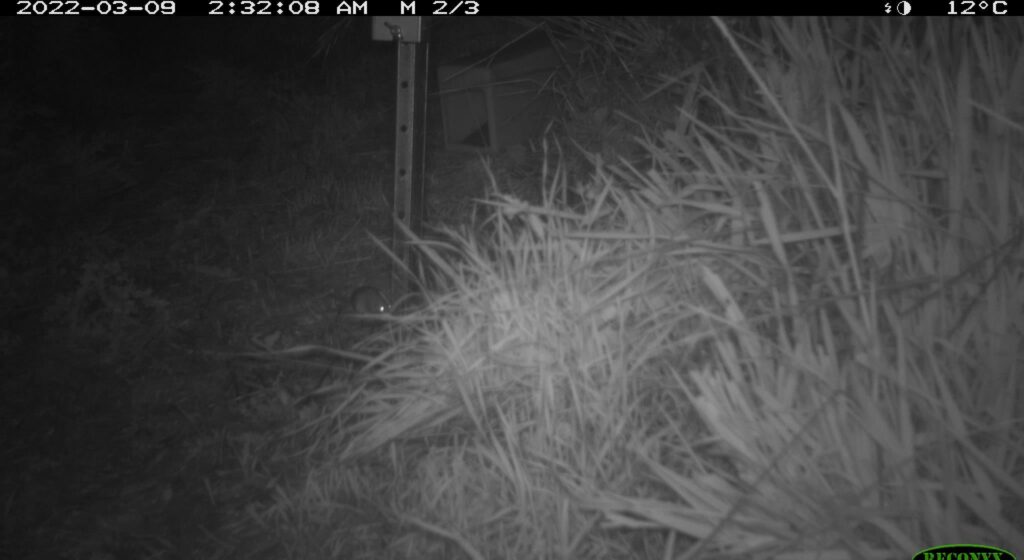
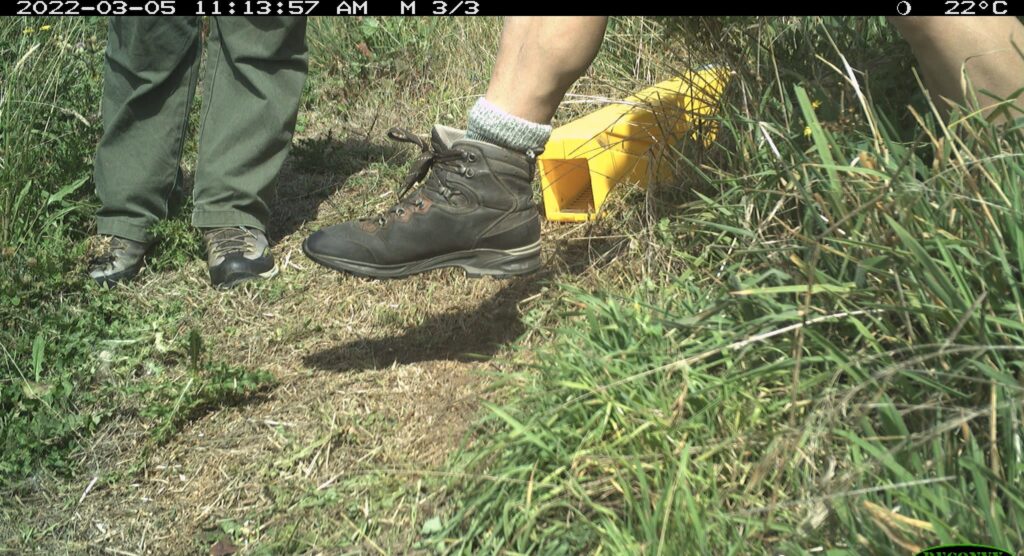
Thankfully, the resident rodents continued being removed by the kill traps on a regular basis. Weeks later there was still no mustelid evidence caught on film, nor in trap. It was decided because the area being monitored was so small, we could conclude that the invading mustelid had visited the area but had departed again before the fence was fully repaired.
However, just for confirmation, a stoat dog was taken through to confirm the camera’s footage was accurate. It was. We could all breathe easier. Banks Peninsula’s precious tītī (sooty shearwater) were safe.
Special thanks to Camera 66, 100, and friends for a job well done, proof of mustelid absence was attained. Another mission file can now be marked complete.
